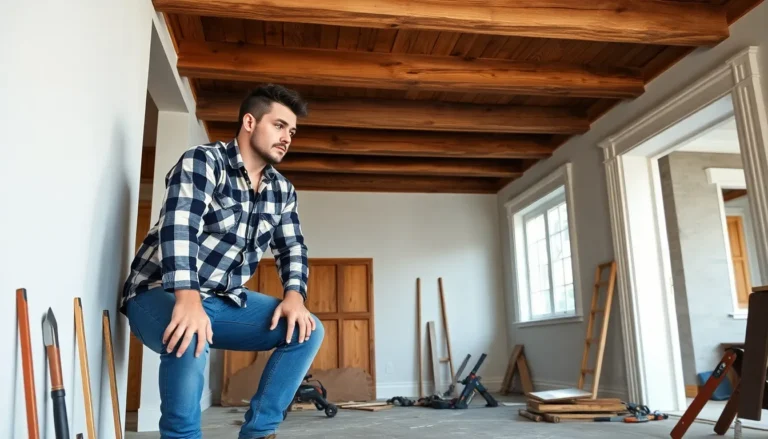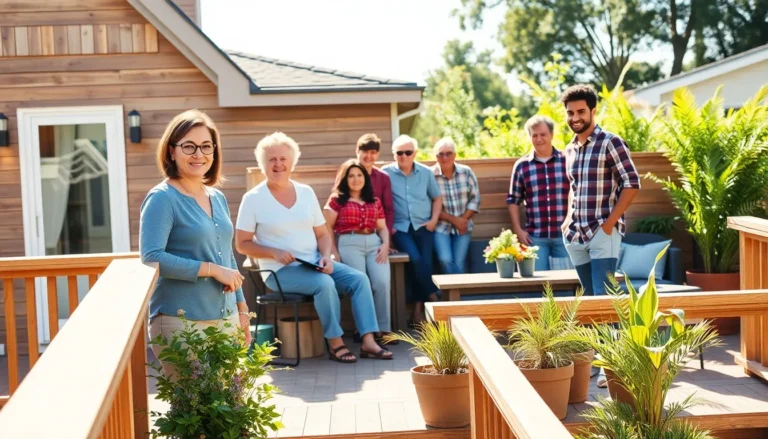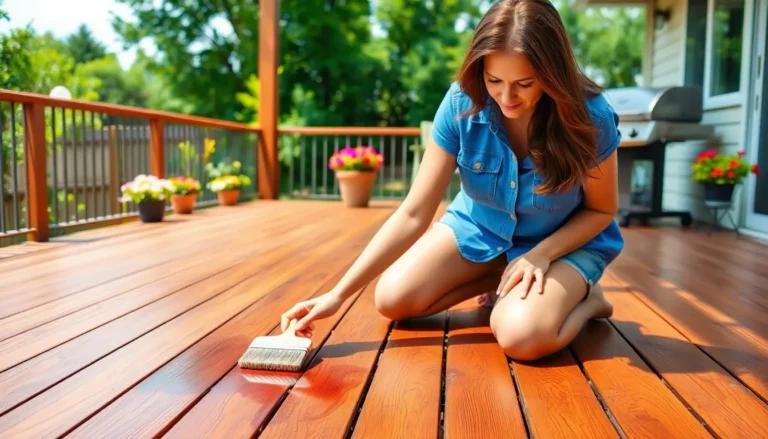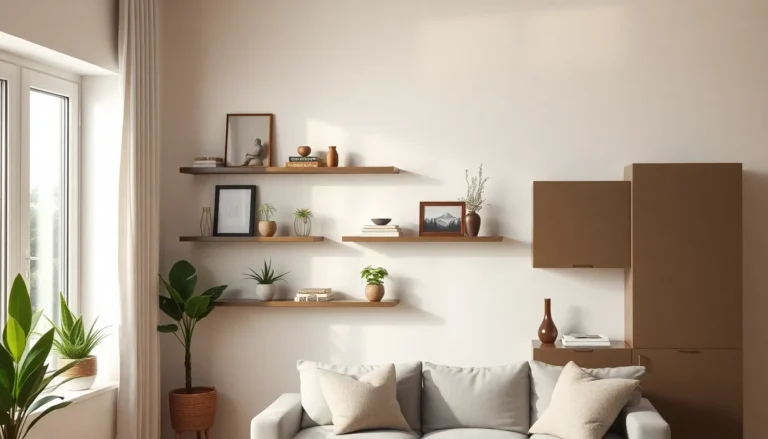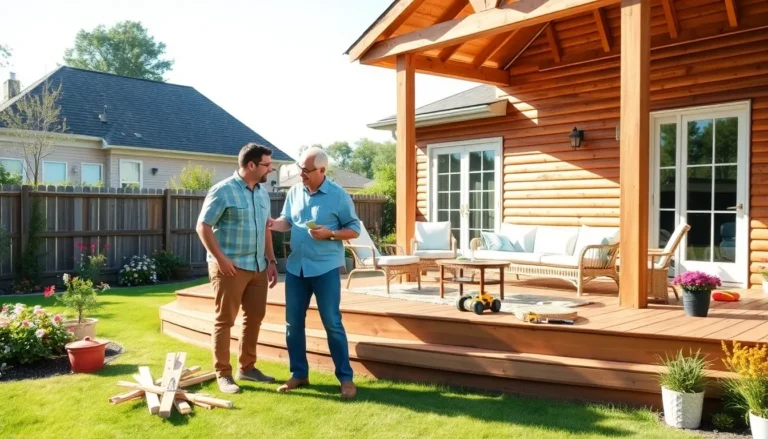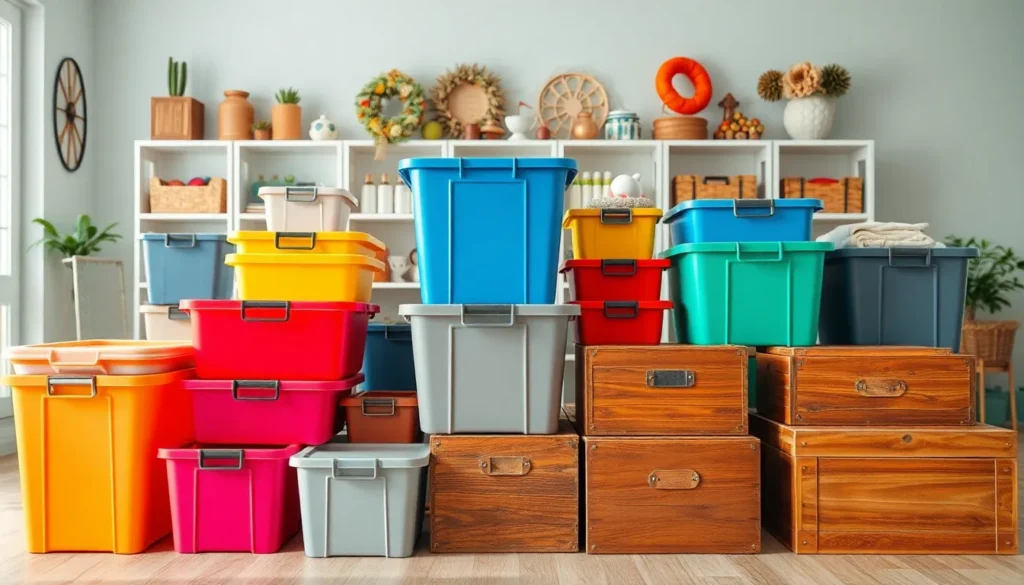Table of Contents
ToggleIn a world where space is often at a premium, storage containers have become essential for both personal and commercial use. These versatile solutions offer a practical way to declutter homes, organize businesses, and even facilitate temporary housing. With a range of sizes and materials available, they cater to various needs, making them a go-to choice for many.
Whether it’s for moving, renovation, or simply managing everyday items, storage containers provide a reliable way to keep belongings safe and accessible. Their durability and adaptability make them perfect for any situation, from storing seasonal decorations to housing tools and equipment. As the demand for efficient storage solutions grows, understanding the benefits and types of storage containers can help anyone make informed decisions.
Overview of Storage Containers
Storage containers provide practical solutions for various storage needs, catering to both personal and commercial settings. These containers come in multiple sizes, ranging from small bins to large shipping containers, allowing users to select options that best suit their requirements.
Materials also vary, with choices like plastic, metal, and wood, each offering unique characteristics. Plastic containers are lightweight and moisture-resistant, making them ideal for indoor storage. Metal containers, often used commercially, provide durability for heavy-duty applications. Wooden containers offer aesthetic appeal, suitable for decorative storage in homes.
Versatility defines storage containers, as they assist in decluttering homes, organizing businesses, and offering temporary housing solutions. Common uses include:
- Moving: Containers facilitate transport during relocations, simplifying packing and unpacking.
- Renovation: Temporary storage during home renovations protects belongings from damage.
- Everyday management: Containers help organize everyday items, enhancing accessibility and maintaining order.
Durability ensures long-lasting use. Many storage containers withstand elements, making them suitable for outdoor conditions. Adaptability further expands their usefulness, accommodating items from seasonal decorations to tools and equipment.
Understanding the diverse types and benefits of storage containers empowers users to make informed choices that align with their storage needs.
Types of Storage Containers
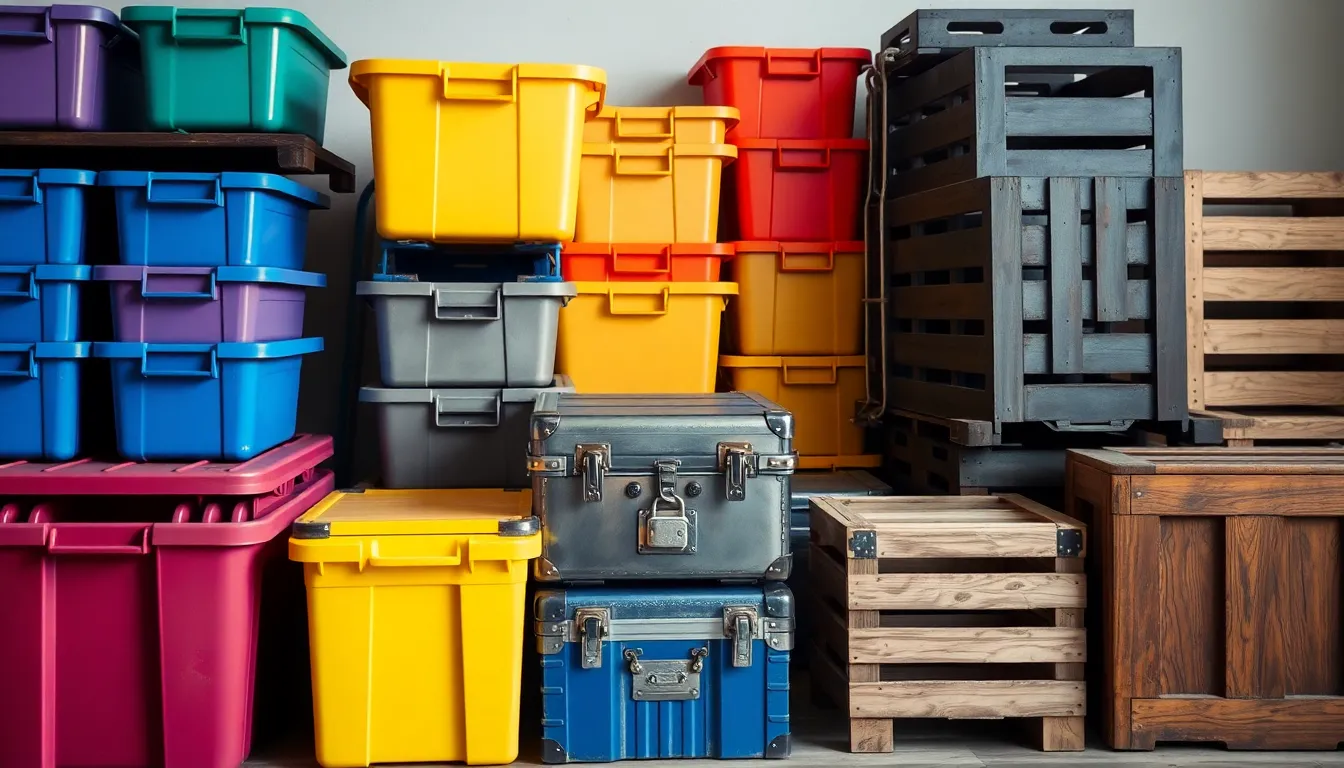
Storage containers vary widely in material, size, and purpose. Understanding these types aids in selecting the right container for specific needs.
Plastic Storage Containers
Plastic storage containers are lightweight and moisture-resistant, making them suitable for indoor and outdoor use. They come in a range of sizes, from small bins for accessories to large totes for larger items. Their stackable design maximizes space efficiency. Additionally, transparent options allow quick identification of contents. Popular for organizing seasonal decorations, clothing, and toys, plastic containers are recyclable and often include snap-on lids for secure closure.
Metal Storage Containers
Metal storage containers offer superior durability and security, ideal for heavy-duty applications. They withstand harsh environmental conditions, making them suitable for outdoor storage. Commonly used for tools, equipment, and hazardous materials, these containers often feature locking mechanisms to ensure safety. Sizes vary from small toolboxes to large shipping containers. Corrosion-resistant coatings enhance longevity, while portable options allow for easy relocation on job sites.
Wooden Storage Containers
Wooden storage containers provide aesthetic appeal along with functionality. Known for their classic look, wooden containers are often used for decorative purposes, such as storing linens or showcasing collectibles. They generally vary in size and craftsmanship, often featuring intricate designs or finishes. While wooden containers may require maintenance to prevent moisture damage, their natural insulation properties make them suitable for indoor use. Additionally, they can serve dual functions, such as being incorporated into furniture designs.
Benefits of Using Storage Containers
Storage containers offer numerous advantages for both personal and commercial use, particularly in maximizing space and protecting belongings.
Organization and Space Savings
Storage containers facilitate efficient organization by enabling users to categorize items easily. Users can stack containers vertically, utilizing vertical space effectively. This organization leads to improved accessibility, as labeled containers allow for quick identification of contents. Additionally, whether in a home or business setting, storage containers help declutter, creating a more streamlined environment. By consolidating numerous items into these containers, individuals can optimize available space, making areas feel larger and more manageable.
Protection from Environmental Factors
Storage containers provide essential protection against environmental factors that can damage belongings. Many containers, particularly plastic and metal options, offer moisture resistance, safeguarding contents from humidity and water damage. Containers designed for outdoor use frequently feature weatherproof lids and airtight seals, preventing dust, dirt, and pests from entering. Users storing seasonal items or important documents benefit greatly from this protection, ensuring that belongings remain in pristine condition over time.
Choosing the Right Storage Container
Choosing the right storage container involves considering factors like size, material, and budget. Each aspect plays a crucial role in ensuring effective and efficient storage solutions.
Size and Capacity Considerations
Size and capacity significantly influence the functionality of storage containers. Assess available space before selection. Small containers suit tight areas like closets or attics, while larger containers accommodate bigger items, such as furniture or equipment. Standard sizes often include:
| Size | Suitable Use |
|---|---|
| Small (10-20 gallons) | Home organization or craft supplies |
| Medium (30-50 gallons) | Seasonal decorations or sports gear |
| Large (60+ gallons) | Moving furniture or outdoor equipment |
Opt for containers that allow for easy stacking to maximize vertical storage space.
Material Selection
Material selection impacts durability and suitability for specific environments. Common materials include:
- Plastic: Lightweight, moisture-resistant, and easy to clean, ideal for indoor settings.
- Metal: Highly durable, offers long-lasting protection against weather conditions, suitable for outdoor storage.
- Wood: Provides an aesthetic appeal, often used decoratively but requires maintenance to prevent moisture damage.
Choose materials that align with intended use and environmental factors to ensure optimal performance.
Budget and Value
Budget and value are essential in selecting storage containers. Prices vary widely based on size, material, and brand. Determine a budget that accommodates quality without compromising functionality. Consider investing in durable options, as they often provide long-term savings through extended usability. Evaluate additional features like stackability, locking mechanisms, or weatherproofing that enhance the container’s overall value.
Trends in Storage Containers
Storage containers evolve continually, reflecting changing consumer needs and preferences. Notable trends include:
- Eco-friendly Materials
Eco-friendly storage containers gain popularity. Manufacturers prioritize materials like recycled plastics and sustainably sourced wood to meet environmental concerns.
- Customizable Solutions
Customizable options enhance consumer satisfaction. Users now prefer containers that allow personalization with labels, sizes, and colors to match specific organizational needs.
- Smart Technology Integration
Smart storage containers integrate technology. Features such as built-in tracking systems and RFID tags help users monitor inventory and locate items quickly.
- Multi-functional Designs
Multi-functional storage containers appeal to space-saving enthusiasts. Furniture that doubles as storage, such as ottomans with compartments and coffee tables with hidden shelves, gains traction.
- Portable and Mobile Units
Portable storage solutions increase accessibility. Lightweight and wheeled containers enable easy transport, catering to those who need flexibility in storing and moving items.
- Minimalist Style
Minimalist designs resonate with modern consumers. Sleek, simple storage options, often in neutral colors, are favored for their aesthetic and functional appeal in contemporary homes.
- Health and Safety Features
Health and safety considerations shape product development. Containers that feature antimicrobial properties or are made from non-toxic materials provide added assurance for storing food items.
- Innovative Storage Systems
Innovative systems enhance organization. Modular shelving and stacking capabilities allow users to maximize vertical space efficiently and adapt to changing storage needs.
These trends indicate a shift towards more sustainable, versatile, and technologically advanced storage solutions. The growing focus on aesthetics and functionality makes storage containers not just practical tools, but also valuable design elements in homes and businesses.
Storage containers have become essential tools for maximizing space and enhancing organization in various settings. Their adaptability and durability make them suitable for a wide range of applications from personal use to commercial needs. With options available in plastic, metal, and wood, users can find the right container to fit their specific requirements and aesthetic preferences.
As trends evolve towards eco-friendliness and smart technology, the future of storage solutions looks promising. Investing in high-quality storage containers not only protects belongings but also contributes to a more organized and efficient environment. Embracing these versatile solutions can lead to a more streamlined lifestyle, making it easier to manage clutter and optimize available space.

